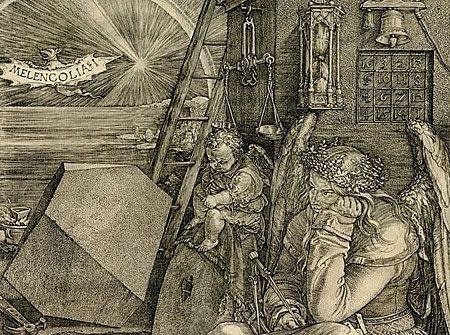Did Albrecht Durer leave secret messages in his art?

Art collector Elizabeth Garner believes she's found hidden messages in Renaissance master Albrecht Durer's engravings and woodcuts. Messages that have been overlooked by centuries of art historians.
[image]
"Melencolia" is riddled with clues. Elizabeth Garner says Durer believed in hiding things in plain sight. The magic square in the top-right corner is not something to be solved as much as it is a clue that the entire picture is a puzzle. Image courtesy MAGJECKL Collection, Elizabeth Maxwell-Garner
43 of Durer's prints, belonging to Garner, are now on display at the Hillstrom Museum on the campus of Gustavus Adolphus College in St. Peter.
Create a More Connected Minnesota
MPR News is your trusted resource for the news you need. With your support, MPR News brings accessible, courageous journalism and authentic conversation to everyone - free of paywalls and barriers. Your gift makes a difference.
MPR's Euan Kerr spoke to Garner, who says she became fascinated with Durer after studying and copying one of his works in an art class.
One day, looking at a print called "The Young Couple Threatened by Death (The Promenade)" something struck her.
I said 'The woman is wearing an illegal dress,' because they had very strict laws in Nuremberg about what anybody could wear. I said, 'It's an illegal dress and everybody is going to know it's an illegal dress. I don't understand why he wasn't arrested for making this particular type of print.'
She decided Durer wanted people to really look at the dress and that's when she noticed a word hidden in the neckline.
"I couldn't understand how nobody else had found it," she said. "But it turned out it was supposed to be me."
It was a coded reference to Durer's origins. Soon she was finding other clues hidden in other Durer's, she just had to work out what they meant.
"It's like the Da Vinci Code, just without Da Vinci," she said.
She bought print after print, cross-referencing what she found with contemporary accounts of life in Nuremberg. Finally she says she understood what Durer had hidden in his pictures, and why he could sell them.
"When I finally realized they were about scandals, it was like 'Yeah! OK! Well, this is basically like the National Enquirer.' "
Garner will lecture on her theories at Gustavus on Sunday afternoon. She'll then lead a gallery tour at the Hillstrom on Monday evening.
Listen to the entire story by clicking on the audio link below: